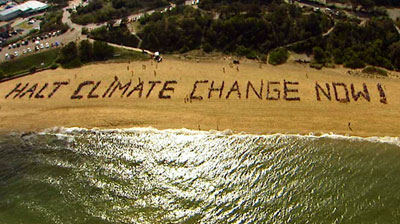
Climate change is an environmental issue with social, economic and political repercussions and climate change itself is affected (if not effected) by social, political and economic factors. Raising global temperatures and melting ice caps is one of the major concerns. Though the possibility of such a calamity needs to be understood based on rigorously generated data of the extent to which environment is affected, the science that governs such a massive change can be discussed based on the physico-chemical nature of the phenomenon and its subsequent biological and ecological effects.
Sun’s radiation includes a spectrum of radiation that includes Infrared (IR) to ultra violet (UV) radiation. Most of the ultra violet radiation is filtered by ozone, although ozone depletion is a matter of concern, it should not be misconstrued to be the cause of global warming. The visible and infrared radiation reaches earth. Earth’s surface reflects back radiation of lower energy i.e., low frequency infrared radiation. This radiation is then absorbed by greenhouse gases that in turn radiate this energy in all directions i.e., some of the radiation that is reflected by earth comes back to earth. This radiation energy is crucial to maintain the temperature of earth. But, an uncontrolled increase in the greenhouse gases in the atmosphere results in increased radiation coming back to earth which in turn leads to abnormal rise in temperatures. So essentially, some of the sun’s radiation that reaches earth which ideally should be reflected back gets stuck in between the earth’s surface and its atmosphere reflecting back and forth leading to the rise in global temperatures.
The major greenhouse gases are water vapor, carbon dioxide, ozone and methane. Methane pollution is associated with both natural and human sources. Natural sources like wetlands, oceans, etc. and human intervention through industrialization and intensive livestock farming are considered to be the major causes of methane pollution. Carbon dioxide pollution is largely associated with industrialization, automobiles and deforestation. Increased temperatures lead to large evaporation rates in oceans, which intensifies greenhouse effect and this kind of a mechanism is called as a positive feedback loop.
The increased global temperatures lead to warm oceans that affect many ocean dwelling organisms and their patterns. Apart from a rise in temperature the large amounts of carbon dioxide absorbed by oceans is converted into carbonic acid resulting in an increased acidity of oceans that in turn affects carbon dioxide absorbing capacity of oceans. Shell forming organisms like shrimps and corals are badly affected. Global warming also results in the melting of ice caps. The sea levels would eventually rise and most of the vulnerable islands would be submerged under water. (If you recall what was taught during physics tuition classes about Archimedes’ Principle, the water level should not rise when the ice melts. Why does the water level rise in reality?) Ice cap melting would also result in the destruction of the polar organisms’ habitat. Considering the intricately woven network of the dependencies of human and other life forms, calling global warming a doom is not an exaggeration.
Considering how regulation of greenhouse gases like carbon dioxide has a large impact on a nation’s economy, one could safely call it a problem of international politics.

